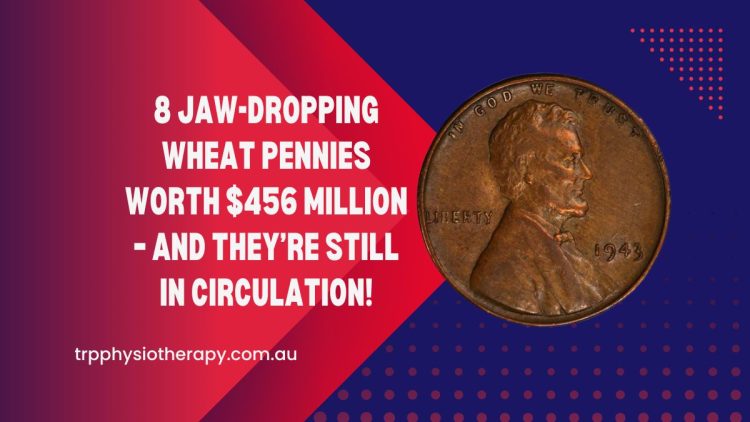Wheat pennies, minted from 1909 to 1958, may seem like ordinary coins, but some are worth small fortunes. These coins hold immense value due to rare minting errors, limited production runs, and historical significance.
Many collectors dream of finding one in pocket change or old coin jars. Below are eight extraordinary Wheat pennies that have shocked the numismatic world—and some might still be in circulation today!
1909-S VDB Wheat Pennies
This coin marked the debut of the Lincoln cent, and the “V.D.B.” initials on the reverse caused controversy, resulting in a limited mintage of only 484,000. Its scarcity makes it highly collectible, and it can fetch over $100,000 in top condition.
1914-D Wheat Penny
Struck in Denver, the 1914-D Wheat penny is one of the toughest to find, especially in good shape. High-grade versions have sold for over $150,000, making it a prized find for serious collectors.
1922 No D Wheat Penny
Due to a minting error in Denver, some 1922 pennies were struck without the “D” mintmark. These rare anomalies are worth tens of thousands and are highly sought after by error coin collectors.
1943 Bronze Wheat Penny
While most 1943 pennies were made from steel to conserve copper for World War II, a few were mistakenly struck on leftover bronze planchets. One of these famously sold for $1.7 million, making it one of the most valuable coins ever.
1944 Steel Wheat Penny
After reverting to copper in 1944, the mint accidentally produced a few pennies using steel blanks from the previous year. These are extremely rare and valuable, easily mistaken for regular steel cents unless examined carefully.
1931-S Wheat Penny
With only 866,000 minted, the 1931-S stands out as a key date coin. While not an error coin, its limited mintage makes it incredibly desirable. Uncirculated specimens regularly bring in thousands at auction.
1955 Double Die Wheat Penny
This famous error features strong doubling on the date and inscriptions. Released before being caught, it remains one of the most famous error coins. Even circulated examples are valuable, with high-grade versions fetching over $40,000.
1936 Double Die Obverse Wheat Penny
Another fascinating double die error, the 1936 version displays noticeable doubling on the obverse. Though not as dramatic as the 1955 version, it is still quite rare and valuable among collectors.
| Coin | Mint Year | Estimated Value | Notable Feature |
|---|---|---|---|
| 1909-S VDB | 1909 | $100,000+ | Designer Initials on Reverse |
| 1914-D | 1914 | $150,000+ | Low Mintage |
| 1922 No D | 1922 | $80,000+ | Missing Mint Mark |
| 1943 Bronze | 1943 | $1,000,000+ | Wrong Planchet |
| 1944 Steel | 1944 | $110,000+ | Leftover Steel Planchet |
| 1931-S | 1931 | $3,000+ | Low Circulation |
| 1955 Double Die | 1955 | $40,000+ | Visible Doubling |
These coins prove that even small pocket change can hide massive value. From unique mint errors to ultra-rare dates, these Wheat pennies continue to captivate collectors across the globe.
If you stumble upon one, it could be life-changing. Check your change—you might be holding onto history.
FAQs
What makes a Wheat penny valuable?
Rarity, minting errors, and historical significance are the main factors. Coins with low mintage or known mint errors tend to be more valuable.
Can I still find Wheat pennies in circulation?
Yes, while rare, some still turn up in circulation, coin rolls, or old jars and collections. Always check dates and mintmarks.
How can I tell if I have a rare Wheat penny?
Start by checking the date and mintmark. Use a magnifying glass to spot any errors or anomalies. A coin appraisal or grading service can help verify authenticity and value.

